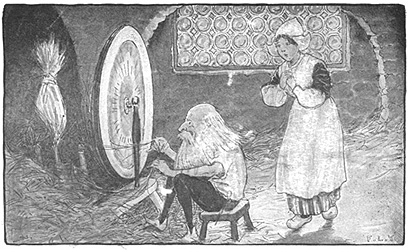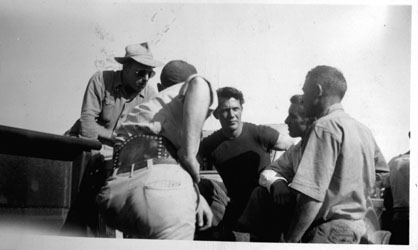Historians, if they remember the mythopoetic men’s movement at all, place it roughly between 1990 and 1993. Everyone seemed to be talking about men. Robert Bly’s Iron John and Sam Keen’s Fire in the Belly were each bestsellers. And then off the media radar. The men’s movement was dead. Or was it? One organization survived, even thrived, through it all: the New Warrior Network (NWN), later renamed ManKind Project (MKP).

The New Warrior Network had benefited from the boom years of the movement, certainly, but it also saw uninterrupted growth through the 1990s. Where five regional centers existed in 1991 and nine in 1992, a full 23 cities had Training Adventure weekends established by 1996. Some 10,000 men had been initiated by summer of the following year; by summer 2006, 32,000 had been through the weekend training. The NWN renamed itself “ManKind Project” in 1996 for publicity purposes, but the mission remained relatively steady. Despite high costs for new initiates ($500-$600 for a weekend) and demanding schedules for the volunteers, the organization has expanded well beyond its initial scope.
How has the ManKind Project (MKP) sustained itself? At first glance, it may have seemed the least likely to survive. New Warrior weekends received some of the most disparaging media coverage. The organization had even caught flack from Bly himself, calling it a quick-fix and a caricature of the warrior archetype. In a devastating turn of events, Ron Hering, one of the founders, was murdered in 1993. How did it manage to press on, even thrive? Four things appear to have set it apart: 1) simplification of principles, 2) an outline for progress, 3) federated centralization, and 4) an evangelistic temperament. These factors made it possible to outlast the boom.
First, MKP managed to boil its beliefs down to a minimum. Other expressions in the movement were so open-ended as to appear either muddled or dismissed as “New Agey.” The New Warrior Training Adventure weekends were able to focus on several key issues: getting men comfortable with each other, affirmation of male worth, grappling with family wounds, and formulation of a life mission. A modest set of wisdom could be imparted over the three-day event, enough to feel like true initiation had occurred. This initiation was understood to be a starting point, an entrance into male maturity. Moreover, the ManKind Project felt no need to multiply endless archetypes. Stories and images could be helpful, but the important thing was having a workable theory. This fell into place for them with Robert Moore’s work on the four-fold king, warrior, magician, lover. Moore became the unofficial theorist of the masculine soul, speaking at MKP conferences and expositing his anthropology in print. The organization also loosely appropriated Joseph Campbell’s stages of the hero journey as a paradigm for men’s lives. It was a manageable system in which to work.
Secondly, MKP offered a blueprint for masculine progress. After the initiation, having been introduced to the male mysteries, a man is given the next step. The microcosm of the “I-groups” allows men to process the weekend, bond with each other, and work on personal issues. Starting shortly after the weekend experience, these groups might last anywhere from eight weeks to several years, two to three hours a session. From there participants are encouraged to oversee other initiation weekends, or perhaps seek further training, as in Bill Kauth’s “Warrior Monk” program. Men have responded well to having some manner of structure, instead of having to invent their own way forward. Where other mythopoetic strands preferred a laissez faire model, the ManKind Project provides a plan for masculine growth. In the same vein, MKP’s activities have appealed to a spirit of “manly” proactivity that has usually already been inculcated in its participants. In my own experience, the most frequently used phrase in MKP is “Good work, men.” The training materials and suggested readings reinforce this approach, emphasizing self-determination, while giving practical steps to make that happen.
Third, naturally, MKP’s growth was made possible by centralization of the organization. From the outset its founders desired to maximize the program. Kauth was clearly the most important presence within MKP, but he believed strongly that the programs would only grow if managed under local leadership. While he, Tosi, and Hering had disproportionate control in the early years, they found ways to flatten the hierarchy as the organization expanded. What resulted was a presbyterian polity, something analogous to the United States government’s balance of powers. In 1991 the organization established a board consisting of one voting representative from each center. In 1993 an “executive training director” was appointed to ease the burden on local leaders, and after that numerous “chairs” were added as an executive branch. Certification of leaders was established, as was the writing of the “Governance and Council” guidelines. As one leader of the movement conceded, “To become bureaucratic is inevitable.” By creating a federation that governed both locally and nationally, the MKP adopted polity that had shown itself viable in America.
Finally, ManKind Project was evangelistic. By this one should not hear “Evangelical,” “doctrinaire,” or even “proselytizing.” Spirituality, being attached only to humanistic principles, allowed the organization to claim, “[W]e don’t invest any of the rituals we use with religious significance.” MKP, nonetheless, was built on a fairly aggressive word-of-mouth network. They understood themselves as having a mission to redeem men, and this mission meant initiating and training others. In language reminiscent of Christian revivalism, Robert Moore once said at rally, “The ManKind Project, I believe, represents a sincere effort to try and create for the first time in the history of our species a vessel of masculine initiation that strives truly to be inclusive . . . . This is a new thing on this planet – a grandiose undertaking, but a worthy undertaking that we have decided to work on.” He finished by saying, “These are the words I want to leave with you – Keep love alive, keep love alive! And if we keep love alive, my personal judgment is, nothing is going to stop us.” In such a way, the MKP retained the belief that men, if truly initiated and transformed, could become the impetus to heal the world. This gospel was used to recruit men for weekends and plug them into the leadership structures. Unlike individualistic men’s groups, MKP anchored men within the fraternal system, actively generating a network of “warrior brothers.”
ManKind Project presses on today. It faces new organizational struggles, but the content of the programs and the charisma of the participants remain. In all likelihood MKP will not initiate a new public phase of a men’s movement – but if it stays the course it should darn well survive the next.
[For footnotes or bibliographical information, contact me.]

 Rumpelstilskin. I used the later version from Grimms’ compilation, one you can read
Rumpelstilskin. I used the later version from Grimms’ compilation, one you can read  This seemed to make sense to the men, but it didn’t make sense of it for a men’s group. Where was the value in it for us?
This seemed to make sense to the men, but it didn’t make sense of it for a men’s group. Where was the value in it for us?
